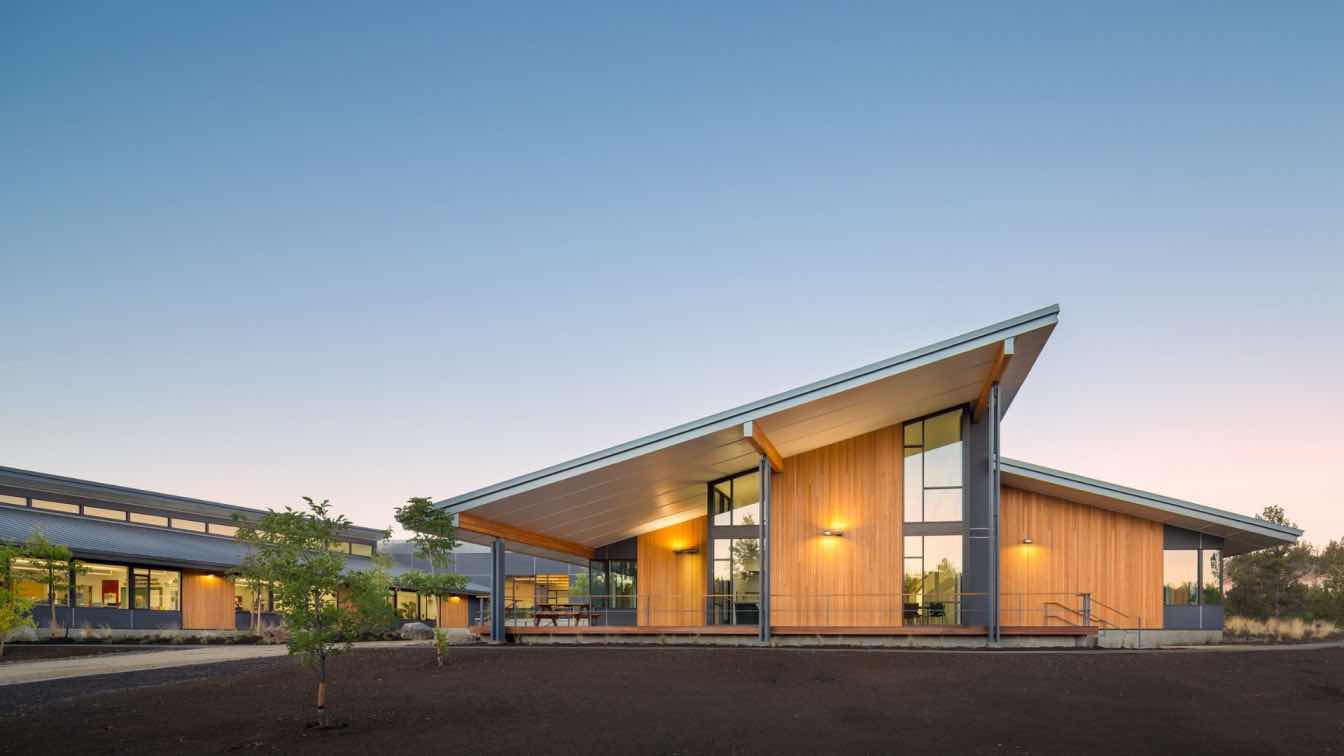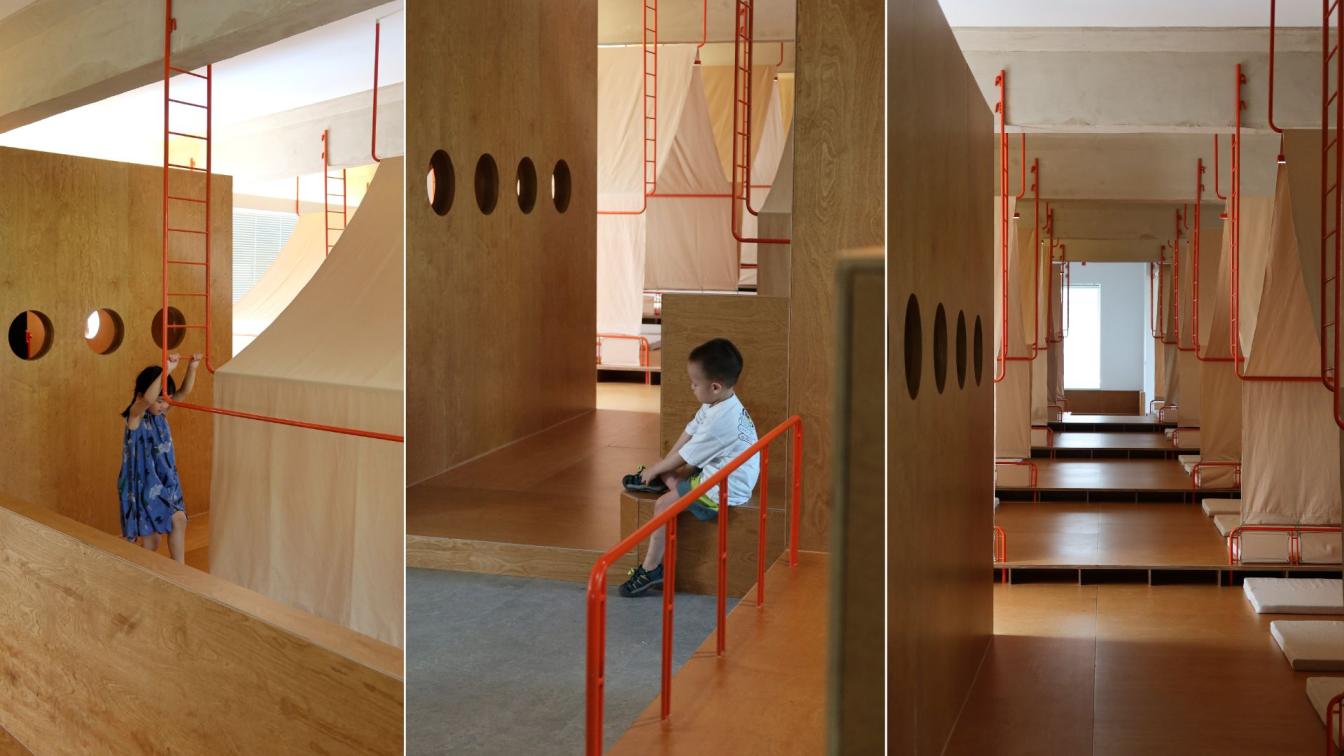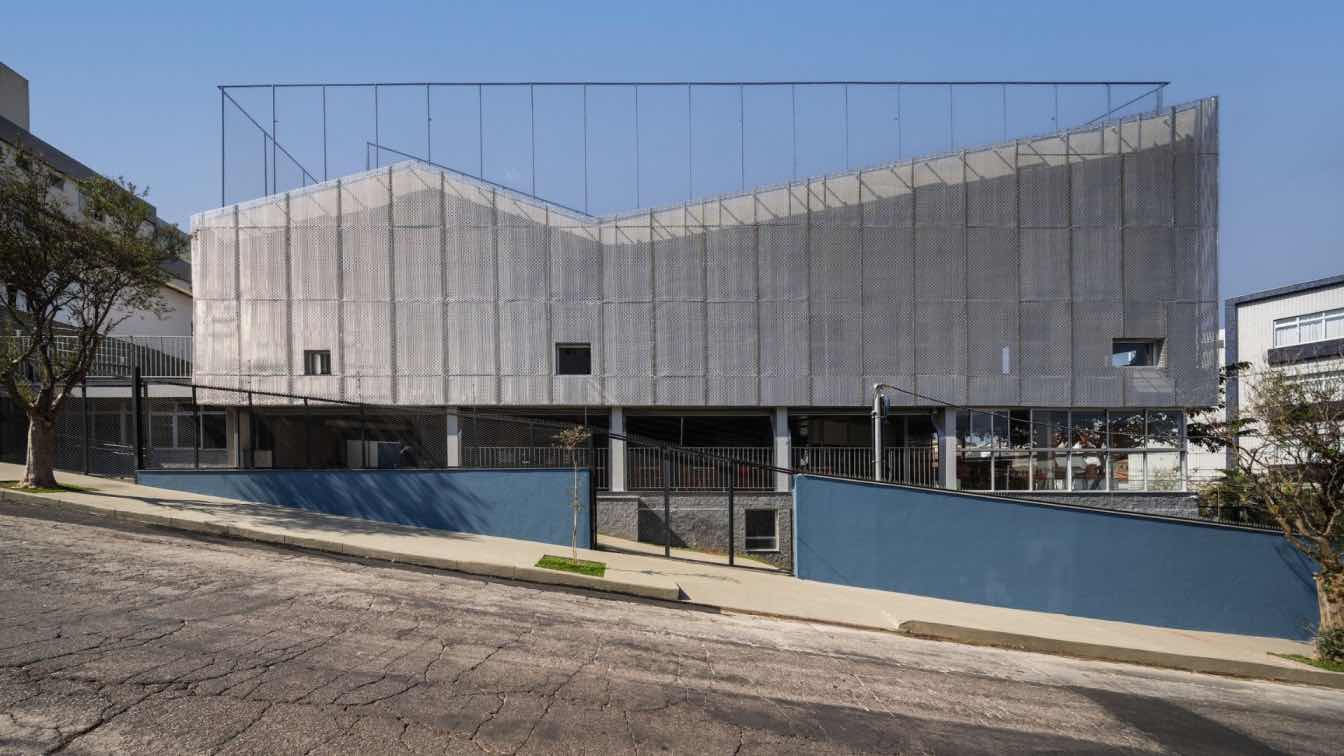Hennebery Eddy worked with Cascades Academy of Central Oregon on programming, master planning, fundraising, and design for their new K-12 campus. Completed in two phases, the 52,000-square-foot, three-building campus is a compelling physical space that inspires learning—one in which the outside and inside learning environments are seamlessly connected. Simple, rational building forms are oriented to gather natural light. The dramatic natural features of the property provide beautiful outdoor classrooms ideal for experiential learning programs. The site’s rock-lined canyon is treated with reverence, with the school set back from its edge so as to not dominate it.
Site specific energy reduction strategies included: relying on the site to reduce building energy use, a horizontal geo-exchange heat pump system provides 50% of heating and all cooling needs and orienting the roof to accommodate photovoltaic panels.
The campus was designed with a focus on the site's natural environment. Differentiated by distinct wings, The primary building’s interior spaces flow into one another and beyond to Oregon's high desert landscape. The library opens to the main corridor connecting visually and spatially with the commons, which extend out to the canyon. In the separate gymnasium building, the gymnasium's floor reaches to touch the forest floor. Interior finishes and colors were selected to complement the building design and site. Large wood roof overhangs extend inside as interior ceilings. Cedar wall panels and fir doors provide warmth and texture. Polished concrete floors meld into the dusty desert terrain. Inspired by surrounding vegetation, bold interior accent colors, fabrics, and wayfinding devices were incorporated into the design. Classrooms are configured to respond to a variety of set ups and allow the teachers to deliver curriculum interactively via SMARTboards.
In accordance with the master plan, a 12,000-square-feet expansion of the campus was added to the primary educational building to support the school's commitment to experiential learning and the relationship between indoor and outdoor spaces. Indoors, the expansion encompasses administrative offices, a flexible conference seminar room, and an “IDEA Lab” makerspace and technology shop for innovation, design, engineering, and art. Four upper school classrooms and an upper school commons area provide additional learning and social collaboration spaces. A breezeway connects the addition, adjoined to the gymnasium, to the existing facilities.
Outdoors, an expansive nature play area for the lower school students features custom designed playscapes and landscaping that integrates with the school’s 21-acre wooded site and encourages interaction with the adjacent terrain. Designed by landscape architect Mayer/Reed, the area includes an embankment slide, building, climbing, digging, and jumping areas incorporating logs, stumps, and other native natural materials, and agility-based equipment such as a slackline course, swings, and a hopscotch area. Each component promotes physical activity and interaction with outdoor elements.






































